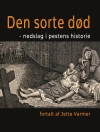Monumentum Ancyranum: The Deeds of Augustus is a monumental inscription that provides a detailed account of the accomplishments of Emperor Augustus, also known as Octavian, the first Emperor of Rome. Written in Latin and inscribed on walls throughout the Roman Empire, this literary work showcases Augustus’s military conquests, political achievements, and the establishment of the Roman Empire. The style of the text is concise and factual, reflecting the official nature of the document. This inscription served as a propaganda tool to solidify Augustus’s power and legacy. Its literary context lies in the tradition of Roman historical writings, emphasizing the glorification of the Emperor and his reign. The Monumentum Ancyranum stands as a testament to Augustus’s authority and influence in shaping the Roman world. Emperor Augustus, a skilled politician and military strategist, wrote this inscription to immortalize his reign and promote his accomplishments. His desire to control the narrative of his reign led to the creation of this detailed account of his deeds. Augustus’s strategic use of propaganda through written inscriptions demonstrates his understanding of the power of literature and public perception. I recommend Monumentum Ancyranum to readers interested in Roman history, political propaganda, and the literary legacy of Emperor Augustus.
Giới thiệu về tác giả
Emperor Augustus, born Gaius Octavius Thurinus in 63 BCE and passing in 14 CE, was the founder of the Roman Principate and considered the first Roman Emperor. He wielded unparalleled influence over Rome following the demise of his great-uncle Julius Caesar and after his decisive victory at the Battle of Actium in 31 BCE. Augustus’s reign ushered in an era of relative peace known as the ‘Pax Romana’ which lasted for more than two centuries. A notable testament to his leadership and ventures is encapsulated in his autobiographical inscriptions, ‘Monumentum Ancyranum, ‘ also referred to as ‘The Deeds of Augustus’ (Res Gestae Divi Augusti). This epigraphy, carved upon two bronze pillars and situated in Rome, offers a first-person narrative of his life’s work and political accomplishments. His literary style is characterized by its directness and the use of propaganda to portray his rule in a morally positive light, casting himself as Rome’s benign protector and restorer. While the ‘Monumentum Ancyranum’ remains a crucial primary source for understanding Augustus’s policies and the ideology underpinning his rule, it also serves as a reflection of the Augustan age, a period marked by patronage of the arts, literature, and monumental architecture. Augustus’s writings not only detailed his political and military achievements but also contributed significantly to the crafting of his legacy, which reverberates through history as the archetype of Roman imperial authority.












